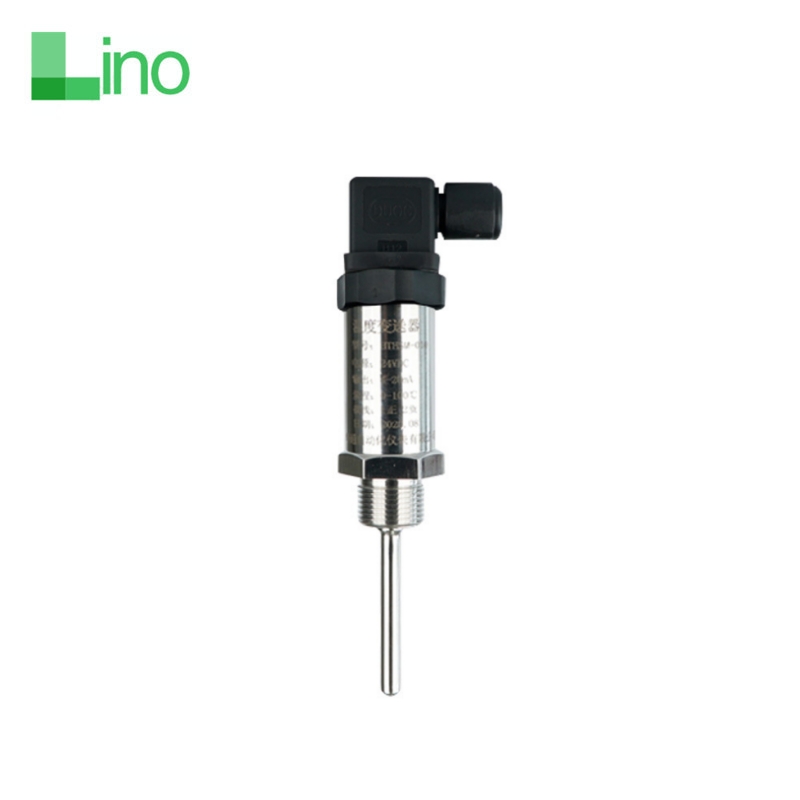Description:
The temperature transmitter uses PT100 as the signal measurement element, and has been automatically tested by a computer. The laser resistance trimming process is used to compensate for the zero point and sensitivity temperature in a wide temperature range. The amplifying circuit is located in the stainless steel housing, which converts the sensor signal into a standard output signal, giving full play to the technical advantages of the sensor. It is the excellent performance of the CWDY series temperature transmitter. It has anti-interference, overload, low temperature drift, high stability, and high test accuracy. It is an ideal temperature measuring instrument in the field of industrial automation.
Principle:
The temperature transmitter is a PT100 sensor that produces a resistance effect under the influence of temperature, and is converted by a special processing unit to generate a differential voltage signal. This signal is converted into a standard analog or digital signal by a special amplifier that corresponds to the range.
Parameters:
|
Measure range |
-50~300℃ |
|
Medium |
liquid, gas |
|
Material |
304 stainless steel, thermowell material 304 stainless steel (contacting the measured medium), threaded connection 304 stainless steel (contacting the measured medium), clamp connection 316L stainless steel, housing 304 stainless steel. |
|
Other material |
display housing ABS engineering plastic (digital tube display) .Hirschmann joint ABS engineering plastics |
|
Accuracy |
±0.5%(stardard) |
|
Stability |
±1.0%F.S/year |
|
Work temperature |
-20℃~80℃ |
|
Power supply |
12~36VDC, 15~36VDC (with display) |
|
Output |
4~20mA, 0-10VDC , PT100, RS485 (standard Modbus-RTU protocol) |
|
Response |
18s without casing, 55s with thermowell |
|
Protection |
IP65 (without display), IP54 (with display) |
